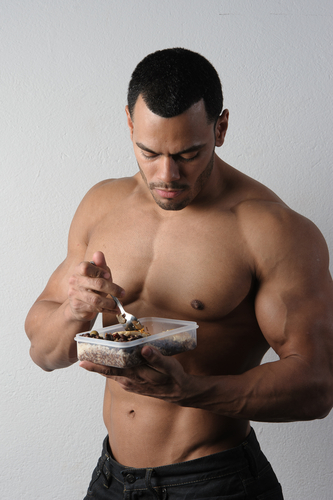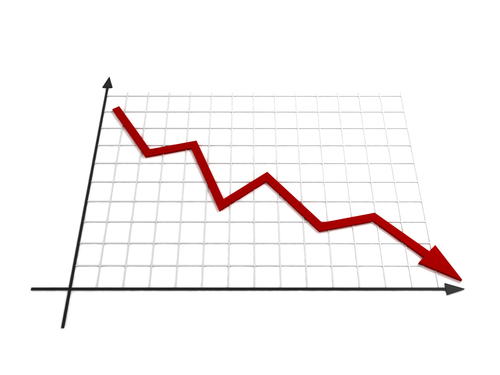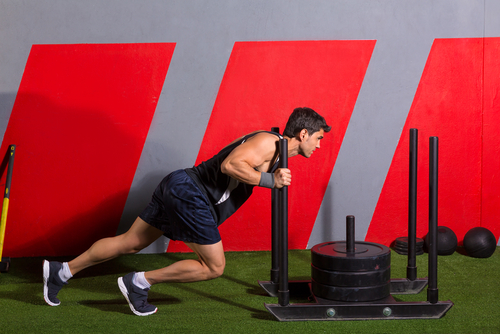[fusion_builder_container hundred_percent=”no” equal_height_columns=”no” menu_anchor=”” hide_on_mobile=”small-visibility,medium-visibility,large-visibility” class=”” id=”” background_color=”” background_image=”” background_position=”center center” background_repeat=”no-repeat” fade=”no” background_parallax=”none” parallax_speed=”0.3″ video_mp4=”” video_webm=”” video_ogv=”” video_url=”” video_aspect_ratio=”16:9″ video_loop=”yes” video_mute=”yes” overlay_color=”” video_preview_image=”” border_size=”” border_color=”” border_style=”solid” padding_top=”” padding_bottom=”” padding_left=”” padding_right=””][fusion_builder_row][fusion_builder_column type=”1_1″ layout=”1_1″ background_position=”left top” background_color=”” border_size=”” border_color=”” border_style=”solid” border_position=”all” spacing=”yes” background_image=”” background_repeat=”no-repeat” padding=”” margin_top=”0px” margin_bottom=”0px” class=”” id=”” animation_type=”” animation_speed=”0.3″ animation_direction=”left” hide_on_mobile=”small-visibility,medium-visibility,large-visibility” center_content=”no” last=”no” min_height=”” hover_type=”none” link=””][fusion_text]
Key Point Summary for Fat Loss Without Sacrificing Muscle
- There are 5 ‘levels’, or stages, you must implement IN ORDER to optimize fat loss
- Nutrition should be specific to your training, simply being in a caloric deficit is insufficient
- Muscular contractions burn calories, not getting a weight from point A to point B
- Observe and implement your MED (minimum effective dose) to avoid plateauing
Torching fat while building muscle is not impossible, but unless you have everything dialed in almost perfectly it is extremely difficult. If you are looking for noticeable results as fast as possible, focus on one goal at a time and focus your efforts 100%. To paraphrase an old Chinese proverb, “A man who chases two rabbits, catches neither”. Or the southwestern United States version, “You can’t ride two horses with one @$$”.
To focus on fat loss you must start with the things that are going to have the overall largest impact. We are going to break down the key tools for maximizing effective fat loss in to 5 stages, or levels. It isn’t necessary to do them all from the start, but you MUST do them in order. Skipping a stage will not only slow your progress, but could potentially cost you some of that hard-earned muscle in the process.
They key is finding the minimal effective dose (MED) for levels 2-5 for you to continue getting results. This means knowing when you need to: add training volume, increase density, add cardio (HIIT or steady state), change macros, cycle calories, decrease calories, etc.
Learning to monitor your progress and when to make a change is a skill, but we can give you the framework to help make it simpler. After understanding each stage, we will provide some guidelines to help you determine when and what to change first.
1. Strategic Nutrition
This is the ‘base’ of the fat loss pyramid. It is what everything else must be built off of. If you don’t have a foundational understanding of how to set up your nutrition, the Mi40 Foundation is a great place to start. For now, these are the 4 components that make up any strategic nutrition plan:
Calories
 Determining your starting point for calories is often made more complicated than it needs to be. The key phrase here is “starting point”, that means you are allowed to change it accordingly. Often the simplest way to determine your initial calorie level is to base it off of what you are currently consuming.
Determining your starting point for calories is often made more complicated than it needs to be. The key phrase here is “starting point”, that means you are allowed to change it accordingly. Often the simplest way to determine your initial calorie level is to base it off of what you are currently consuming.
There is NO REASON to suddenly jump into a massive caloric deficit when switching to fat loss. That is the fastest way to plateau and back yourself into a corner, resulting in potential muscle loss and certainly frustration.
If you are coming off of a growth phase (a.k.a. bulking) and were gaining weight on your previous amount of calories, start by cutting that amount by about 15-20% depending on how quickly you were gaining weight before. If you were maintaining weight and body composition at your previous intake, you may only need to reduce calories slightly, 10-15%. Maintain your starting calorie level for at least 5-7 days before re-adjusting as it sometimes take your body a few days to adapt before you see any noticeable changes.
Combinations
Knowing how to combine certain types of foods (macros) together can have a substantial effect on body composition. The general rule of thumb is pretty straightforward; avoid high fats and high carbs in the same meal.
Timing
This is where some people struggle, understanding when to eat what and why. So here are the cliff notes when fat loss is the primary goal, but many of them apply the rest of the time as well:
- Stick with protein and healthy fats for breakfast, rather than carbs
- Avoid carbohydrates for at least 3 hours pre-workout
- With the exception of coconut oil or MCT oil, avoid fats within about 3 hours of your workout
- Lean protein and fast digesting carbs post-workout, not slow digesting ones
- Have your last meal no closer than about 2-3 hours before bed
- Carbs in your last meal can be ok, but try faster digesting (high GI) ones, not slow digesting (low GI)
- After a metabolic training session (lots of lactic acid) it might be a good idea to wait about 30-45 minutes before consuming your post-workout shake if you are consuming carbohydrates
Cycling
 Calorie or carb cycling throughout the week is a bit more advanced, and everyone may not need to implement it, but it can be a valuable tool. The concept is very simple. Less calories and/or carbs when your body doesn’t need them for recovery (such as on non-training days) with periodic higher calorie/carb days to refuel glycogen, increase recovery, and up-regulate metabolism.
Calorie or carb cycling throughout the week is a bit more advanced, and everyone may not need to implement it, but it can be a valuable tool. The concept is very simple. Less calories and/or carbs when your body doesn’t need them for recovery (such as on non-training days) with periodic higher calorie/carb days to refuel glycogen, increase recovery, and up-regulate metabolism.
The ratio of “low” to “high” days necessary will vary from person to person, but a good starting point is 3-4 “low” followed 1 “high” day to start. As progress slows, you could add an extra “low” day in between each “high” day. This would be considered using micro-cycles for your carbs and calories.
A more advanced approach using macro cycles would be cyclical bulking. This allows you to optimize your hormones for short bursts of muscle gain alternated with quick cutting cycles to keep you lean. The entire method and guidelines for how to optimally apply this technique can be found in the Incredible Bulk.
[/fusion_text][fusion_text]
2. Intelligent High-Intensity Training
Implementing resistance training is essential to increase insulin sensitivity, preserve lean muscle mass, and increase your metabolism. Maintaining some higher intensity weight training (6-8 rep range) throughout y our fat loss phase is a great idea. They key is to focus on hard contractions, not just ‘moving weight’.
our fat loss phase is a great idea. They key is to focus on hard contractions, not just ‘moving weight’.
Understanding proper execution, such as what is taught in MI40 Foundation and MI40 Xtreme, is imperative to getting the most benefit from your training.
Light weights and high reps will not stimulate your fast-twitch muscle fibers sufficiently and could allow them to atrophy (decrease in size and strength) if left untrained. Muscular contractions are what burn calories, not getting a weight from point A to point B.
The total volume of high intensity training may decrease eventually if your calories are insufficient to help you recover from the mechanical stress of the heavier loads. Even if you are at the end of an extreme fat loss phase (like contest prep), some higher intensity work should still be a part of your program.
Summary of key benefits:
- Stimulate fast-twitch fibers to prevent atrophy
- Stimulate potential muscle growth
- Increased metabolism
- Burn moderate amount of calories
[/fusion_text][fusion_text]
3. Metabolic Training
The next step is to phase in a more metabolic style of training either in the latter portion of each session following the higher intensity work, or in a separate session on it’s own. One strategy might be to alternate more hypertrophy-style sessions with more metabolic-based ones throughout the week.
Although the weights you use may be slightly less, the density of the workouts will increase. This means more super sets, giant sets, circuit-style training, or even utilizing metabolic tools like prowler sleds, battle ropes, or rowing machines. The decreased rest periods and greater amount of time under tension will result in an accumulation of lactic acid and EPOC (excess post-exercise oxygen consumption).
EPOC is related to the amount of additional calories your body burns after the session above your baseline (RMR). This means that you can still be burning extra calories up to 48 hours after your workout is finished!
In addition, the lactate production during your workout will stimulate a cascade of hormonal effects that will increase lipolysis (release of fatty acids from adipose tissue) enabling your body to burn (oxidize) it for fuel both during and after your workout.
Summary of key benefits:
- Increased EPOC
- Elevated metabolic rate
- Burn higher amount of calories
[/fusion_text][fusion_text]
4. HIIT
High intensity interval training (HIIT) is an invaluable tool for body recomposition when used appropriately. Not only can it greatly elevate metabolic rate and EPOC, but there is minimal muscle damage which means you can recover quickly and it is less likely to impair subsequent training performance.
The keys to effectively implementing HIIT sessions are the method and timing.
Method
 HIIT is best performed in a way that does not have resistance on an eccentric, only concentric resistance. For safety purposes, it is not recommended to utilize something that will keep moving or exerting force when you stop concentrically.
HIIT is best performed in a way that does not have resistance on an eccentric, only concentric resistance. For safety purposes, it is not recommended to utilize something that will keep moving or exerting force when you stop concentrically.
Best options for HIIT:
- Prowler sled pushes
- Stationary bike sprints
- Track or hill sprints
- Battle ropes
- Rowing machines
Poor options for HIIT:
- Treadmill
- Stair machine
- Elliptical
Timing
There are two considerations for timing HIIT workouts.
The first, is what day of the week to do them. It might not be wise to attempt to do a HIIT workout the day after you trained the primary muscle group(s) you’ll need. So sprints or prowler pushes after leg day are probably not a good idea, as you can imagine. To start out, avoid doing HIIT sessions 2 days in a row if possible to give your CNS some time to recover as most methods can be quite taxing (if you’re doing it right).
The timing during the week is also important if you are calorie/carb cycling. HIIT primarily relies on glucose (glycogen) as its fuel source. If you are too depleted there will be insufficient stored glycogen available to fuel the session and this can result in the breakdown of protein to be used instead once your energy demands exceed the rate at which your body can oxidize fats for fuel. So the first few days after a ‘carb-up’ would be the opportune time for some intense HIIT sessions.
The second consideration is what time of day. If you can do it at least 4 hours away from your training session that would be ideal. However if you absolutely must do it in the same session as your main workout, it is recommended to decrease the duration of the HIIT and perhaps do it immediately before your workout. Perhaps only 5-10 minutes instead of 15-20. The benefit to doing HIIT pre-workout rather than after is the increased metabolites and lactic acid will help release fatty acids to be more easily burned during training. Although it may slightly decrease performance if you are training a related body part, the goal here is fat loss not muscle building so the benefits outweigh the cost.
Summary of key points:
- EPOC
- Increase metabolism
- Minimal mechanical damage
- Shorter duration, burn most calories after the session
- Need sufficient fuel (glycogen) to avoid muscle breakdown at high intensities
[/fusion_text][fusion_text]
5. Steady State
Contrary to some of the recent popular commentary, steady state is not ‘evil’. It has a time and place to be used. However, it should be one of the last tools to be applied in your quest for shreddedness (ok, I may have made that word up).
Once you have already implemented the previous 4 stages, steady state cardio can be added in small doses to keep shaving off the excess fat.
Just like HIIT, timing is important.
The first place to add steady state is NOT as a 30+ minute treadmill marathon. 10 minutes after your metabolic resistance training or even 15-20 minutes after a HIIT session is a great spot to begin. This will help oxidize (burn) the fatty acids released from the previous workout and increase blood flow, delivering nutrients and clearing metabolic waste, speeding recovery.
Although you may burn a greater percentage of fat during steady state, your overall caloric expenditure will be lower and it will be limited to the duration of your session. Unlike HIIT or resistance training, steady state will produce zero EPOC or increased metabolic rate hours after you are finished.
Steady state can also be an option if you are depleted after going low-carb for a period of time since, as mentioned previously, you won’t have sufficient glycogen available for a productive HIIT session without potentially risking muscle protein breakdown.
Summary of key benefits:
- Burn extra calories in a low energy state (depleted)
- No additional expenditure after the session
- May help with recovery from stages 2&3
[/fusion_text][fusion_text]
Piecing the Pyramid Together

As the pyramid structure indicates, start at the bottom and implement the stages one step at a time.
Step 1
If you are limited in your time during the week, after setting up an intelligent nutrition strategy, start with your higher intensity training. From there, either attempt to change the frequency with which you train each body part by adding a session or by changing your training split.
For example, if you were doing a more traditional bodybuilding split (4-5 workout rotation) you might change to a push/pull/legs (3 workout rotation) split and then to an upper/lower (2 workout rotation) split. The greater frequency you can train a body part, the more often you are improving its ability to uptake nutrients and making it more insulin sensitive, which is a key factor in fat loss.
Step 2
Once you have stages 1 & 2 nailed down and if your progress begins to slow, start adding in some metabolic work. If you can train 5+ times per week, it might be best to start by having two complete metabolic sessions and the others structured around higher intensity work. If you only have availability for 3-4 workouts per week, you could make the latter half of your sessions metabolic-based and keep your higher intensity training at the beginning of your workout.
Step 3
Once you have already progressed through stage 3, HIIT training is the next weapon in the arsenal. If you don’t have time for a full HIIT session on it’s own day or at least 4 hours away from a workout, 5-10 minutes before your regular workout is a great place to start.
If you are going to do HIIT on its own day, or on a training day at least 4 hours away from your workout, the nutrition is simple. Try not to eat within 2-3 hours beforehand. After the session, you can take some electrolytes and then wait to have your next regular meal 60-90 minutes later.
Step 4
After applying stages 1-4, if your fat loss stalls or if you are on a deadline (such as a vacation, contest, wedding, etc), the final piece of the puzzle is to strategically add in steady state. Beginning with 10-15 minutes after your metabolic training or HIIT workouts are usually the best places to start. If, after 1-2 weeks progress slows again, you may consider adding in a steady state cardio session on it’s own perhaps on an off day or away from all other training sessions. The goal of a steady state session is simple. Increase blood flow and burn a few additional calories.
If you are carb cycling, you may even transition from HIIT to steady state during each depletion phase as glycogen levels drop off to prevent potential muscle protein breakdown.
[/fusion_text][fusion_text]
If you want all of this completely put together for you check out:
If you have less than 3 years of training experience:
MI40 Foundation – 40 days of workouts, complete nutrition guide, and 8+ hours of videos to help you master execution to get the most out of every workout. Check it out HERE

For the advanced trainee with at least 3-5 years of training experience:
Cell Expansion Protocol MI40-X (Designed to follow MI40 Foundation) – 6 periodized phases of training, 40 days of workouts, complete nutrition calculators for every phase (know exactly how much, what, and when to eat for optimal results), 100+ execution videos from me to ensure you’re getting the most out of every rep to rapidly transform your body. Check out exactly what’s included HERE
[/fusion_text][/fusion_builder_column][/fusion_builder_row][/fusion_builder_container]

